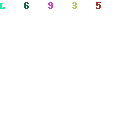supraman215
TPF Noob!
- Joined
- Oct 25, 2006
- Messages
- 979
- Reaction score
- 12
- Location
- Philadelphia
- Can others edit my Photos
- Photos OK to edit
In MOST cases it really isnt needed for DOF in landscape shots. Most of the time f/8 - f/16 will give you more than enough DOF and will be far sharper because its optically better for the lens.
This is true for most landscape because usually you're shooting with a wide angle, and your focus distance is usually relatively (further than 5') far away. The combo of those 2 gives you tremendous DOF so f/8 would likely be more than enough to keep everything in focus.



![[No title]](/data/xfmg/thumbnail/38/38262-10a9668da9a2b36a92cddde57caf87bc.jpg?1734172150)
![[No title]](/data/xfmg/thumbnail/38/38263-ad5e4c9e677626ddb5b1e7cdf9ebe40e.jpg?1734172152)









